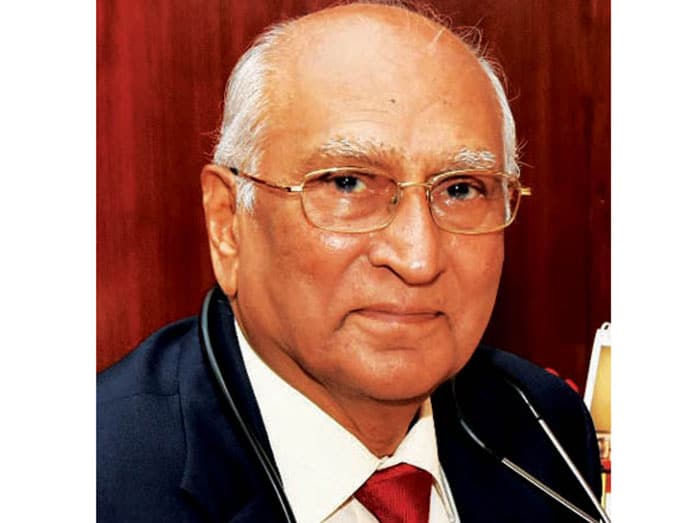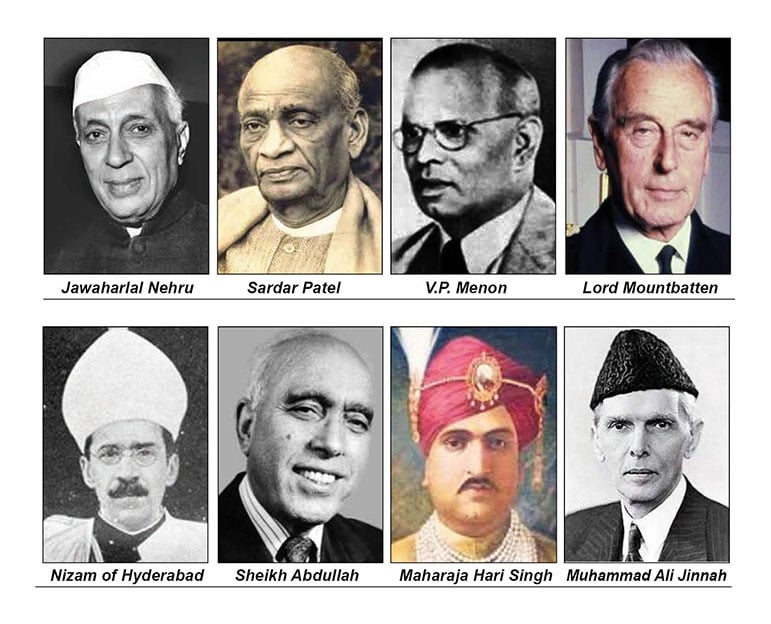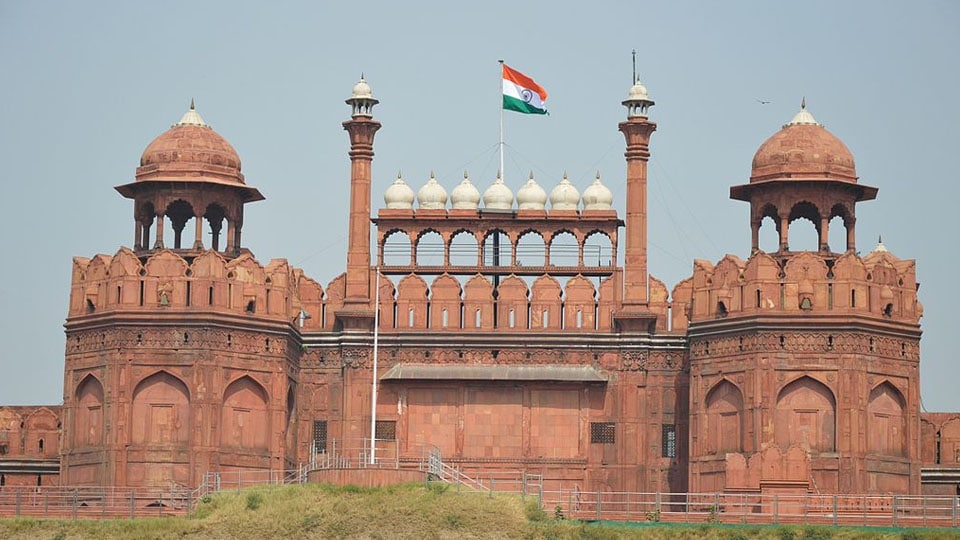By Dr. C. D. Sreenivasa Murthy
Following Modi Government’s historic decision abrogating the much- abused temporary Article 370 and also 35(A), Star of Mysore made a special request to Dr. C.D. Sreenivasa Murthy, a voracious reader and traveller-at-large, to write a special article recalling the early days of Integration of Indian States because among the problem Princely States, the most difficult one was Jammu and Kashmir (J&K).
This article is based on the book ‘Integration of Indian States’ by V.P. Menon, who was the Constitutional Adviser and Political Reforms Commissioner to the last three Viceroys during British rule in India and who also played a vital role in India’s partition and political integration, says the writer Dr. Sreenivasa Murthy. He elaborates saying that it was written by Menon on the advice of Sardar Patel and published in 1956. As per the book, Patel and Nehru had very good rapport with each other and often consulted Mountbatten. They used great tact, sagacity and persuasion and followed all legal principles to make the Princely States to join the Indian Union.

When none of these worked, they followed Chanakya Neethi and made use of the armed forces. Patel, with Nehru and his Secretary Menon, had accomplished the monumental task of delivering a ‘United Nation’ of India by 26th January, 1950 when India got its Constitution and became the Republic of India. — KBG
A moment comes, which comes but rarely in history, when we step out from the old to the new — when an age ends, and when the soul of a Nation, long suppressed, finds utterance.
— Jawaharlal Nehru
As the day of Independence on Aug.15, 1947, approached a lot of thought was given by leaders like Sardar Vallabhbhai Patel and Nehru about the integration of Indian States into the Indian Nation. The British ruled three-fifth’s of India directly through the provincial administration by the Governors. The rest of the Nation was controlled by five-hundred-and-fifty Princely States. The Princely States were very diverse. There were the big States like Hyderabad and Mysore. Many of the Princely States were very small and tiny. Integration of these Princely States into the Indian Union was a mammoth and arduous task. Sardar Patel was the Minister in-charge of States. V.P. Menon was the Secretary in the States Department and the trusted right hand man of Sardar.
Vapal Pangunni Menon (V.P. Menon) was the Secretary in the States Department of Viceroy’s Government, was Adviser to the last three Viceroys of India and an expert about the relations of Princely States with the Government of British India. After Independence, he wanted to retire from the service. Sardar Vallabhbhai Patel persuaded him to continue in the service of the new Nation, as his Secretary in the Department of States. Menon and Sardar Patel were the dramatis personae in the story of the integration of the Princely States into Indian Union.
Britain as the paramount power, controlled these States through various Treaties. In this capacity, the British Government was responsible for mainly three things, namely the Foreign Relations, Defence and Communications. Otherwise, the Princely States had been left to rule for themselves. Most of these Princes were feudal and had no representative Governments. Very often, there was no distinction between ruling Princes and the States’ finances.
On the eve of Independence, the British declared the lapse of their paramountcy, the Princely States technically became independent. They were informally asked to join one of the emerging Nations, the dominions of India or Pakistan, depending upon their geographical contiguity. This act of Britain posed great difficulty and a challenge to the emerging new Nation of India. It was their parting gift. Many of the Princely States were too small to survive on their own and some of the big States toyed with the idea of becoming independent countries. The Princes felt that by joining India, they may lose all their privileges and would become Constitutional and Titular Heads of representative Governments in their States. It was a daunting task to convince and bring all these five-hundred-and-fifty States into the Indian Union.
Sardar Patel and his Secretary Menon went about this task methodically and with perseverance. It was not an easy task to make the Princes agree for accession to India. Sardar Patel was very particular that the Princes should not lose all their wealth, power and privileges they had enjoyed for hundreds of years, and they should be adequately compensated. After the negotiations, each of these smaller and bigger kings were given a hereditary pension called the Privy Purse depending on the revenue of their State.
There were a number of small States, particularly in Gujarat, Punjab, Madhya Pradesh and Orissa. They merged very small States into the neighbouring Provinces. Some of the smaller States were merged to become big administrative units. The king of the biggest State in the area would be made the Rajapramukh. To give an example, some of the States in Central India were merged and the Maharaja of Gwalior became the Rajapramukh.
Junagadh was a very small State in Khathiawar region of Gujarat. The famous Somanath Temple, destroyed by Ghazni Mohammad , was in its territory. More than 85% of the population was Hindus and the State was ruled by a Muslim Nawab. Junagadh had no borders with Pakistan. The Nawab was an eccentric person and was known for his fondness for dogs. Once he celebrated the marriage of a pair of his dogs in a lavish style by spending lakhs of rupees (crores in today’s value) and declared the wedding day as State holiday. His Dewan was Sir Shah Nawaz Bhutto, uncle of the future premier of Pakistan, Zulfikar Ali Bhutto. The Dewan would not allow Menon to meet the Nawab. The Nawab with the connivance of his Dewan signed the instrument of accession with Pakistan and became a part of that country. There was great public unrest in the State and Government of India stationed troops around Junagadh. The Nawab panicked and fled to Karachi in Pakistan. He took away all the cash in the State treasury, his jewels and particularly all his dogs. In his haste to leave Junagadh, he forgot one of his wives and a child in the Palace. They joined the Nawab in Karachi after a few months. Later, Government of India took over the administration of the State and conducted a plebiscite, when more than 95% of population preferred to stay with India.

Rajput Kings are renowned for their heroic battles against the Muslim invaders in the early history of India. Jodhpur was an important State in Rajasthan and bordered Pakistan. Jinnah offered the King many privileges to induce him to join his country. The King seriously toyed with the idea of joining Pakistan. Once he came to Delhi for discussion with Governor General Lord Mountbatten and the Secretary of the States Department Menon. During discussions they strongly counselled him not to join Pakistan. After Mountbatten left the room, the Maharaja, upset about the prospect of losing his kingdom and his privileges, took a revolver and threatened to shoot Menon. Menon, without losing his composure and with his wit and soothing talk, calmed down the King.
Slowly most of the Princes realising that their people wanted representative Governments, acceded to the Indian dominion.
V.P. Menon was all praise for the kingdom of Mysore. According to him, it was the best ruled Princely State in India. It was the first Princely State to start a Representative Assembly in 1881 and an Upper House in 1923. The assets of the Maharaja and his properties were clearly demarcated from that of the State. After a smooth and short negotiation with the Maharaja of Mysore and his Dewan Sir Arcot Ramasamy Mudaliar, the Maharaja signed on 25th November 1949 the Instrument of Accession of the State into the Indian Union. Sri Jayachamaraja Wadiyar assumed the Office of the Rajapramukh of the State of Mysore in independent India.
The kingdoms of Travancore and Cochin were contiguous and the language and culture of the people were similar. Both States had progressive administrations. The ruling families followed Marumakkathayam law, the law of inheritance through the female line. Initially the King of Travancore showed some reluctance to join the Indian Union, probably on the advice of his Dewan Sir C. P. Ramaswami Iyer. But after severe agitations of the people, he joined the Indian Union. These two States were merged and the Maharaja of Travancore became the Rajapramukh of the merged State. The Cochin Maharaja was a very pious and patriotic person and made no demands. When pressed for any particular wishes, he requested that a copy of the ‘Panchangam’, the annual Hindu calendar, almanac, to be given to him gratis every year by the State Government. It is interesting to note that the cost of a Panchangam was eight annas (fifty paise).
Hyderabad was probably the most difficult State to deal with. The State had 85% of Hindus and 15% of Muslims, and it was ruled by Muslim King, the Nizam. Nizam was an absolute feudal King. There, 95% of the Police and 100% of the Army were Muslims. The top administrative set up consisted of mostly Muslims. Since Hyderabad was surrounded by other Indian States and had the majority population of Hindus, Lord Mountbatten advised the Nizam to join the Indian Union. Nizam on 3rd June 1947 issued a ‘FIRMAN’ mentioning his desire of becoming an independent monarch. He loaned an amount of Rs.20 crore (equivalent to about rupees one thousand crores in today’s value) to Pakistan. [In reality it was a donation].
Nizam’s advisers continued negotiations with the Indian Government and prolonged them with various frivolous excuses. The Nizam even took his case to the United Nations Security Council. A band of ruffians (Razakars) under their leader Kasim Razvi, started terrorising Hindus in Hyderabad and later all over the State and border areas. One of the Razakars, namely, Layakath Ali was made the premier of Hyderabad State. Kasim Razvi met Sardar Patel and threatened him that, if Government of India took any action, the whole of South India would burn with a communal conflagration. Since the Razakars were indulging in looting and other heinous crimes against non-Muslims, the Government of India feared about Law and Order and the safety of the people. Finally, Patel and Nehru took the decision for a ‘Police action’ by sending the armed forces. The Indian Army under the command of Major General J.N. Chaudhary marched into Hyderabad on 18th September, 1948. The whole of ‘Police action’ lasted exactly 108 hours (four-and-a-half-days). The State troops of Nizam surrendered unconditionally. Most of the Razakars were rounded up and put into prison. There were no communal clashes in Hyderabad State or anywhere in the country. The people of all religions welcomed the Indian ‘Police action’ and Hyderabad State became peaceful. The Nizam signed the Instrument of Accession to India and sent a cable to UN Security Council withdrawing the Hyderabad case. In spite of these hostilities, the Government of India treated Nizam with respect and great consideration. They allowed him to keep his titles, gave him a fat Privy Purse and made him the Rajapramukh of the new Hyderabad State. Contrast this with the manner in which Sheikh Abdullah, Prime Minister of J&K, treated Maharaja Hari Singh of J&K who had not used the army in any manner. The Maharaja was driven out of J&K.
Kashmir posed a very big and tough challenge to the Government of India. The State had been ruled by Dogra rulers since 1846. Maharaja Hari Singh was the ruler of Kashmir at the time of Independence. Kashmir, by land area, was the biggest Princely kingdom of British India. Kashmir had a strategic importance as it had Indian Union on one side and Pakistan on other. It also had border with Tibet and China. Though the King was a Hindu ruler, 65% of population was Muslims. Maharaja Hari Singh could not make up his mind to accede to either India or Pakistan. He also toyed with the idea of becoming an independent kingdom. He wanted to have a Standstill Agreement with both the countries of India and Pakistan till he made up his mind. Pakistan signed a Standstill Agreement with him, but India didn’t.
Though Pakistan had signed the Standstill Agreement with Maharaja Hari Singh, Jinnah encouraged frontier tribesmen and irregular Pakistani troops to invade Kashmir. These tribesmen were ruthless marauders. The understanding with these tribesmen was that they would not be paid by the Pakistan Government. They could loot and keep the booty. When they invaded Baramulla, they killed nearly ten thousand people and took away the valuables and all the women. They took away all the young Hindu girls and auctioned them. The Maharaja panicked and frantically appealed to the Government of India for military help. The Indian Government pleaded its inability, as he had not signed the Instrument of Accession and hence Kashmir was not part of India. On the advice of Menon and other Indian Government Officers, he fled from Srinagar to Jammu and signed the Instrument of Accession to India.
The Maharaja was so desperate and feared falling into the hands of invaders, he had requested his ADC to shoot and kill him if the aid from India did not arrive. India did a massive airlift of army and controlled the situation. The tribesmen had to retreat. But still a large area of Kashmir fell into the hands of Pakistan. Sheikh Abdullah, the popular leader, who had been imprisoned by the Maharaja, was released from jail and was asked to form the Government. But it is another story that Sheikh Abdullah, soon after forming the Government, wanted Maharaja Hari Singh to leave the State and also refused to pay his Privy Purse. Sardar agreed for these and arranged for the Privy Purse to be paid by the Indian Government. [Contrast this to what Indian Government did to the Nizam. The belligerent Nizam who waged a war against Indian Union was treated with honour and also given the Privy Purse. —Ed]
EDITOR’S NOTE: The three criteria for a Princely State to join either the dominion of Pakistan or the dominion of India, were: a. The majority population (Hindu or Muslim), b. The Princely State’s geographical contiguity to either Pakistan or India and c. The wish of the ruling Prince.
Thus, in the case of J&K, though at that time the majority population was Muslim, the other two criteria lent themselves in favour of India, which means that the Maharaja of J&K wished to join the Indian dominion and the geographical contiguity is with Indian dominion just as part of the geographical contiguity is also with the dominion of Pakistan.








Recent Comments